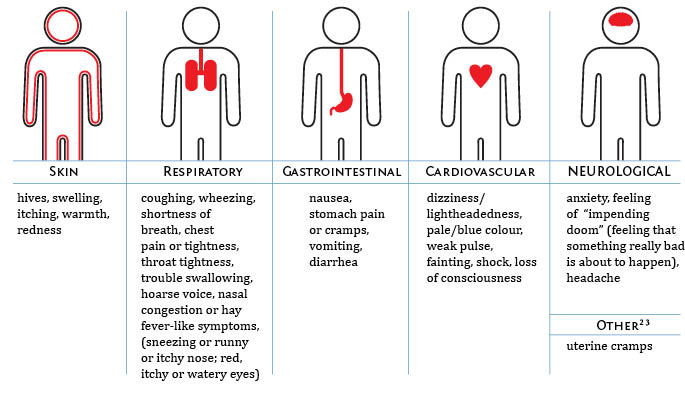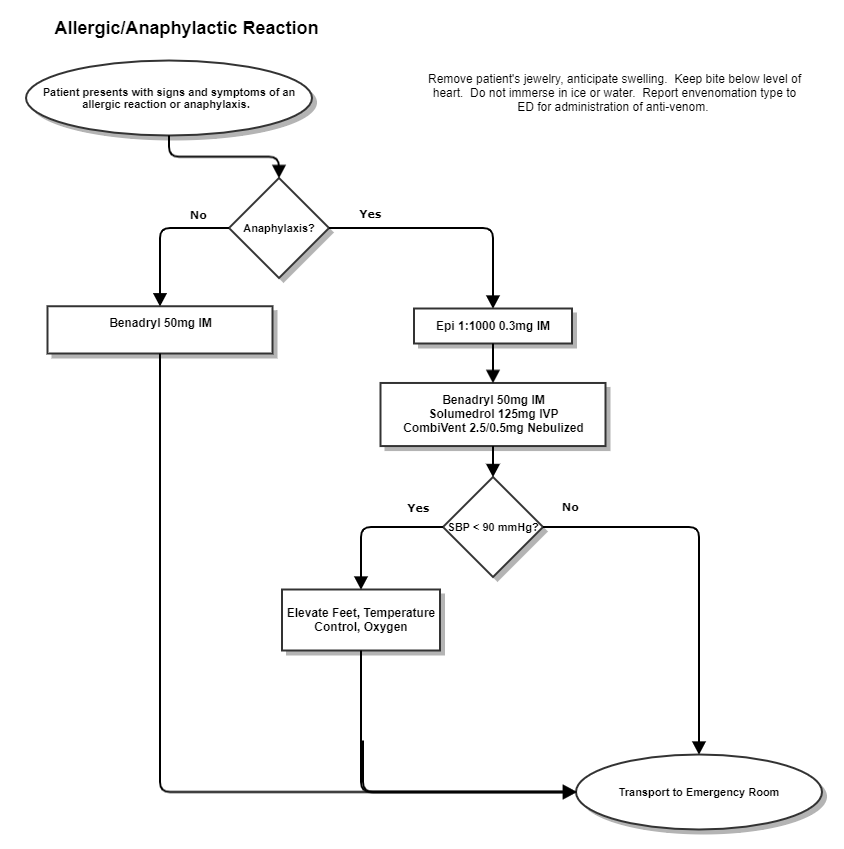Anaphylaxis
Published (updated: ).

What Is Anaphylaxis?
For some people with severe allergies, exposure to their allergen can result in a life-threatening reaction called anaphylaxis. Anaphylaxis is a severe allergic reaction to venom, food, or medication. Most cases are caused by a bee sting or eating foods that are known to cause allergies, such as peanuts or tree nuts.
Anaphylaxis causes a series of symptoms, including a rash, low pulse, and shock, which is known as anaphylactic shock. This can be fatal if it isn’t treated immediately.
Once the patient has been diagnosed, their healthcare provider will likely recommend that they carry a medication called epinephrine with them at all times. This medication can stop future reactions from becoming life-threatening.

Recognizing The Signs of Anaphylaxis
Symptoms usually occur immediately after you come into contact with the allergen. These can include:
- abdominal pain
- anxiety
- confusion
- coughing
- rash
- slurred speech
- facial swelling
- trouble breathing
- low pulse
- wheezing
- difficulty swallowing
- itchy skin
- swelling in mouth and throat
- nausea
- shock

What Causes Anaphylaxis?
The body is in constant contact with foreign substances. It produces antibodies to defend itself from these substances. In most cases, the body doesn’t react to the antibodies being released. However, in the case of anaphylaxis, the immune system overreacts in a way that causes a full-body allergic reaction.
Common causes of anaphylaxis include medication, peanuts, tree nuts, insect stings, fish, shellfish, and milk. Other causes may include exercise and latex.
EMS response to anaphylaxis

Differentiating between an allergic reaction and anaphylaxis may take some more than a passing thought. An allergic reaction is localized, meaning where ever the allergen was passed into the patient’s body is where the reaction is located. Take the same injection of an allergen into the patient’s body and get a reaction on their arms, back, and have difficulty breathing; now they are treating anaphylaxis. In other words, once the ambulance crew have figured out that they are dealing with anaphylaxis, they will probably administer epinephrine. Epinephrine reverses the symptoms of anaphylaxis. Anaphylaxis can be administered by autoinjector.

